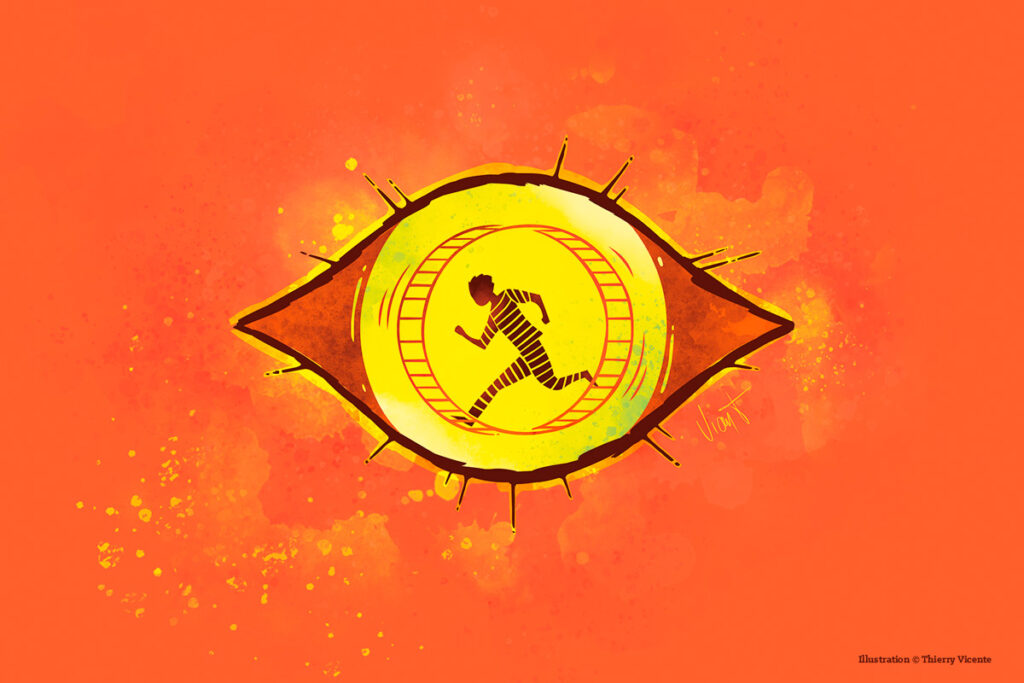[LUM#20] Sports for all, all compelled!
While a typical inmate may spend 22 hours in their cell, the Lavaur juvenile detention center project offered 60 hours of weekly activities when it opened, including 20 hours of sports. A great idea on paper, but in practice it reverses the logic of prison life and turns movement into a constraint.

It was in 2007, when Rachida Dati was Minister of Justice, that the first juvenile detention centers (EPMs) appeared, intended to gradually replace the juvenile wings located in conventional prisons. "The legitimization of these EPMs by the public authorities was based, among other things, on the issue of porosity between adult and juvenile wards and on the difficulties for youth protection educators (PJJ) in ensuring educational continuity in detention centers," explains Laurent Solini.1, a sociologist in the Santesih research team and author of numerous works on the experiences of adolescents incarcerated in juvenile detention centers.
Life of a "standard" teenager
EPMs are distinguished primarily by their slogan , "Life cannot be learned in prison." But how can these young people aged 13 to 18 be offered a real chance at reintegration while being removed from society for the duration of their sentence? Faced with this ontological contradiction of the prison system, EPMs propose to reproduce the standard life of a teenager within prison. "So, as a sociologist, I ask myself, what is a standard teenage life?" The answer is a 60-hour week divided into three parts: 20 hours of school, 20 hours of socio-cultural activities, and 20 hours of sports. "We can already see the emergence of a vision of the so-called 'average' teenager, whose lifestyle is quite similar to that of young people from the most legitimate and upper social classes," continues the researcher.
To conduct his ethnographic research, Laurent Solini entered the EPM in Lavaur through sports, where he worked with young people between 2007 and 2009. The facility houses between 30 and 40 boys and a maximum of five girls. Sports activities mainly revolve around soccer, weight training, and stretching. "It's a constant in the prison world: the fantasy that sports can re-educate, reintegrate, and resocialize. Except that 20 hours of sports per week for young people who are not high-level athletes is enormous! " In interviews, these young people talk about exhaustion and fatigue caused by this "economy of hyperactivity, " by this compulsion to be active, which turns the prison experience on its head. "They don't associate their fatigue with being locked up in a cell like in other prisons, but with having to do sports when they don't feel like it, when they've already done six hours of group activities and would like to be alone for a while."
The body made visible
This pressure is accentuated by the particular architecture of EPMs, characterized by a large open-air courtyard located at the heart of the facility, where some of the sports activities take place. Cells, media library, school, weight room, administration—every area of the prison is equipped with large windows overlooking this central courtyard. This provides natural light, of course, but also makes inmates visible at all times. "All movements take place in the central courtyard and are therefore visible to the other young people who are in their cells or engaged in activities," explains the sociologist. "The constraint is experienced in this body made visible, with all the problems, stigma, labels, and mockery that this can entail, which take on extreme proportions in detention."
In traditional prisons, the famous "promenade" is seen as a reward, but in EPMs, it becomes yet another constraint. "At the time of my investigation, solitary confinement was a small part of the sentence, since inmates were in group quarters from 7:30 a.m. to 9:30 p.m. They were more often mobile than immobile." To escape this hypervisibility, some inmates negotiate the right to stay in their cells for a few hours, with a blanket hung on the bars as a curtain. This practice is tolerated by the guards themselves, who are also subject to this architecture. "When a staff member crosses the courtyard, they may face 50 young people at their bars who will stare at them and possibly insult or shout at them."
Step into the arena
This hyperactivity, combined with hypervisibility, encourages constant self-promotion as soon as inmates leave their cells and are thrown into the central courtyard, which the guards call "the arena." In his book entitled Serving One's Sentence2, Laurent Solini explains that "for young prisoners, serving their sentence means presenting themselves in the most positive way possible in the face of this prison theater." They must therefore "show themselves," prove their worth by entering the arena. "Because movement implies hypervisibility, it is a place of risk-taking and confrontation. It requires showing and showing oneself. "
This confrontation is reflected in practices that sometimes stray from the rules of the classic game, favoring more physical play and contact. This is the case with "goal to goal," where two players face off on a soccer field with the goal of scoring, but without being allowed to use their hands to defend their goal: "I've seen lots of young people stop the ball with their heads and get their noses broken. If they use their hands or hide, they get beaten up. It's not to hurt them, it's a ritual that serves to project a certain image of themselves. For these young people, serving their sentence means earning their place!"
Find UM podcasts now available on your favorite platform (Spotify, Deezer, Apple Podcasts, Amazon Music, etc.).
- SOLINI Laurent, BASSON Jean-Charles, "Leaving the cell/remaining in the cell. A sociology of the paradoxical experiences of detention in juvenile prisons,"Agora debates/youth, 2017/3 (No. 77), pp. 67-79. DOI: 10.3917/agora.077.0067. https://www.cairn.info/revue-agora-debats-jeunesses-2017-3-page-67.htm
↩︎ - SOLINI Laurent,Serving one's sentence at the Lavaur Juvenile Detention Center.SocialIssues, "Questions de société," 2017, ISBN: 9791034603848. DOI: 10.3917/chaso.solin.2017.01. https://www.cairn.info/faire-sa-peine-a-l-etablissement-penitentiaire-9791034603848.htm
↩︎